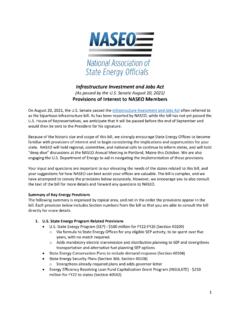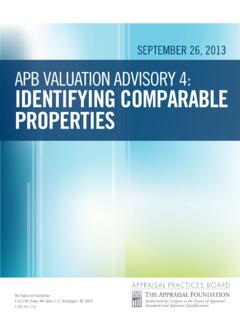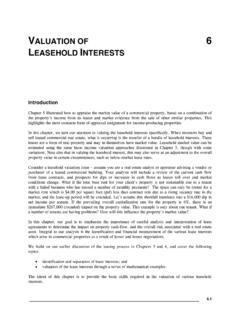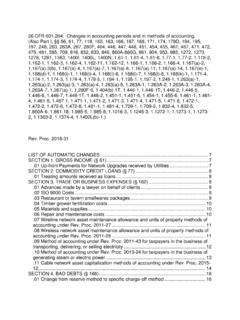Transcription of BY ORDER OF THE AIR FORCE INSTRUCTION 32-1001 …
1 BY ORDER OF THE SECRETARY OF THE AIR FORCE AIR FORCE INSTRUCTION 32-1001 16 OCTOBER 2014 Civil Engineering OPERATIONS MANAGEMENT COMPLIANCE WITH THIS PUBLICATION IS MANDATORY ACCESSIBILITY: Publications and forms are available for downloading or ordering on the e-Publishing website at RELEASABILITY: There are no releasability restrictions on this publication. OPR: AF/A7CO Certified by: AF/A7CO (Col Valerie L. Hasberry) Pages: 9 This Air FORCE INSTRUCTION (AFI) implements Air FORCE Policy Directive (AFPD) 32-10, Installations and Facilities as well as Headquarters United States Air FORCE Program Action Directive (PAD) 12-03, Implementation of Enterprise-Wide Civil Engineer Transformation, and the associated Programming Plans (P-Plans) for implementation.
2 It provides the directive requirements for the operations management of civil engineering. It establishes a civil engineer worldwide baseline set of definitions, operations process descriptions, and organizational guidance which apply to the objective Operations Flight organization for both groups and squadrons (civil engineer groups should use the appropriate organizational equivalent to flight used in this AFI). Contracted functions will provide the same level of service, utilize the same Air FORCE mandated information technology (IT) systems, and implement the same asset and activity management principles and processes as government operated Operations Flights in a manner that is indistinguishable to the installation, Major Commands (MAJCOMs), Air FORCE Civil Engineer Center (AFCEC), and Headquarters Air FORCE .
3 This AFI applies to active duty and reserve Air FORCE units. It does not apply to Air National Guard units. This publication may be supplemented at any level, but all direct Supplements must be routed to the Office of Primary Responsibility (OPR) of this publication for coordination prior to certification approval. The authorities to waive wing/unit level requirement in this publication are identified with a Tier ( T-0, T-1, T-2, T-3 ) number following the compliance statement. See AFI 33-360, Publications and Forms Management, for a description of the authorities associated with the Tier numbers. Submit requests for waivers through the chain of command to the appropriate Tier waiver approval authority, or alternately, to the Publication OPR for non-tiered compliance items.
4 Refer recommended changes and questions about this publication to the OPR using the AF Form 847, Recommendation for Change of Publication; route AF Forms 847 from the field through the appropriate functional chain of command. Ensure that all records created as a result of processes 2 AFI32-1001 16 October 2014 prescribed in this publication are maintained in accordance with Air FORCE Manual (AFMAN) 33-363, Management of Records, and disposed of in accordance with the Air FORCE Records Information Management System (AFRIMS) Records Disposition Schedule (RDS). The use of the name or mark of any specific manufacturer, commercial product, commodity, or service in this publication does not imply endorsement by the Air FORCE .
5 SUMMARY OF CHANGES This publication has been rewritten. This rewrite of AFI 32-1001 includes a mandated organizational structure and corresponding office symbols within the Operations Flight; directs Operations Flights to utilize Playbooks as guides for executing the requirements set forth in this AFI; implements a new work prioritization system for work accomplished within the Operations Flight; directs the Operations Flight to implement standardized Air FORCE preventive maintenance, asset data collection, and asset analysis methodologies; and captures inspection programs that the Operations Flight must manage in accordance with Public Law as well as Air FORCE policy. 1. Main Objective.
6 The Operations Flight s main objective is to effectively operate, maintain, and repair Air FORCE facility and infrastructure assets classified as real property or real property installed equipment (RPIE). Operations Flights, or equivalent contracted function, must utilize common reporting tools and procedures to gather data, conduct analysis, and make decisions on operating, maintaining, and repairing its assets to maximize mission accomplishment and return on investment (ROI), from an Air FORCE -wide, risk based perspective. (T0) Operations Flights will achieve this as follows: Provide execution, management, and oversight of facility and infrastructure operations, maintenance and repair, materiel control, work planning, customer service, service contract management, and operations engineering.
7 (T-1) Maintain capability to respond to and eliminate any facility or infrastructure related emergency condition 24 hours a day. (T-0) Conduct all activities in compliance with applicable environmental, fire, and safety laws, codes, and directives. (T-0) 2. Playbooks. Playbooks are tools that document standardized CE business processes, operating procedures, and resources needed for each of the business processes. They are updated to reflect lessons learned, new policies, and best practices. Operations Flights will utilize Playbooks to receive guidance on how to meet the requirements dictated in this AFI. (T-2) Links to the Playbooks can be found in Attachment 1. When applicable, supporting Playbooks will be found in parenthesis at the end of paragraphs or subparagraphs.
8 3. The Operations Flight within the Objective Squadron. The Operations Flight must be organized in accordance with the current revision of the P-Plan for PAD 12-03 Volume (Vol) 1, and be composed of the following sections: Heavy Repair, Infrastructure Systems, Facility Systems, and Operations Engineering. (Note: Missile Facility Maintenance Element is an approved Air FORCE Global Strike Command variance.) Deviations from this construct must be approved by submitting an organizational change request in accordance with AFI 38-101, Air FORCE Organization. The organizational structure for the Operations Flight is found in Figure 1. (T-1) AFI32-1001 16 October 2014 3 Figure 1. Operations Flight Section Structure.
9 Staffing for the Operations Engineering element must include a civil, mechanical, and electrical engineer as well as technicians from CEOHS, CEOHP, , CEOIU, CEOIH, and CEOF. (T-1). Elements within the Operations Flight must perform base level flight tasks as dictated in the current revision of the P-Plan for PAD 12-03 Vol 2. (T-1) 4. Standardized Work Task Prioritization. Work completed by Operations Flights must be executed and tracked according to the work prioritization system provided in the current revision of the P-Plan for PAD 12-03 Vol 1. (T-1) There are four general classifications of work. They are categorized and prioritized for execution as seen in Table 1. (Operations Support Playbook) (T-1) Table 1.
10 Work Prioritization System. Work Priority Work Type Definition 1 Emergency Corrective Maintenance Work 1. All/only unscheduled (24 hours) 2. Needed to sustain/ensure continued mission operations 3. Don t go home type of work 4. Work until emergency is mitigated/fixed 2A (High) Preventive Maintenance (PM)/Physical Plant Right-sized PM (right work/frequency) Risk based PM approach 4 AFI32-1001 16 October 2014 Operations 2B (Medium) Contingency Construction Training Multi-craft work orders Infused to meet AFI 10-210 requirements 3A (High) Scheduled Sustainment Work (Corrective Maintenance) High mission/equipment sustainment risk RAC 1-3 (unabated) FSD I and II High ROI corrective maintenance 3B (Medium) Scheduled Sustainment Work (Corrective Maintenance) 1.













